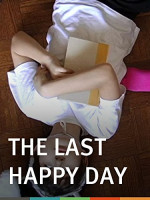The Last Happy Day Filming Locations

Where was The Last Happy Day filmed? The Last Happy Day was filmed in 3 locations across Germany, United States and Brazil in the following places:
The Last Happy Day Filming Locations
Düsseldorf is a city in western Germany known for its fashion industry and art scene. It's divided by the Rhine River, with its Altstadt (Old Town) on the east bank and modern commercial areas to the west. In the Altstadt, St. Lambertus Church and Schlossturm (Castle Tower) both date to the 13th century. Streets such as Königsallee and Schadowstrasse are lined with boutique shops.
New York City comprises 5 boroughs sitting where the Hudson River meets the Atlantic Ocean. At its core is Manhattan, a densely populated borough that’s among the world’s major commercial, financial and cultural centers. Its iconic sites include skyscrapers such as the Empire State Building and sprawling Central Park. Broadway theater is staged in neon-lit Times Square.
São Paulo, Brazil’s vibrant financial center, is among the world's most populous cities, with numerous cultural institutions and a rich architectural tradition. Its iconic buildings range from its neo-Gothic cathedral and the 1929 Martinelli skyscraper to modernist architect Oscar Niemeyer’s curvy Edifício Copan. The colonial-style Pátio do Colégio church marks where Jesuit priests founded the city in 1554.
The Last Happy Day (2009)
The Last Happy Day is an experimental documentary portrait of Sandor (Alexander) Lenard, a Hungarian medical doctor and a distant cousin of filmmaker Lynne Sachs. In 1938 Lenard, a writer with a Jewish background, fled the Nazis to a safe haven in Rome. Shortly thereafter, the U.S. Army Graves Registration Service hired Lenard to reconstruct the bones - small and large - of dead American soldiers. Eventually he found himself in remotest Brazil where he embarked on the translation of "Winnie the Pooh" into Latin, an eccentric task that catapulted him to brief world-wide fame. Sachs' essay film uses personal letters, abstracted war imagery, home movies, interviews, and a children's performance to create an intimate meditation on the destructive power of war.
